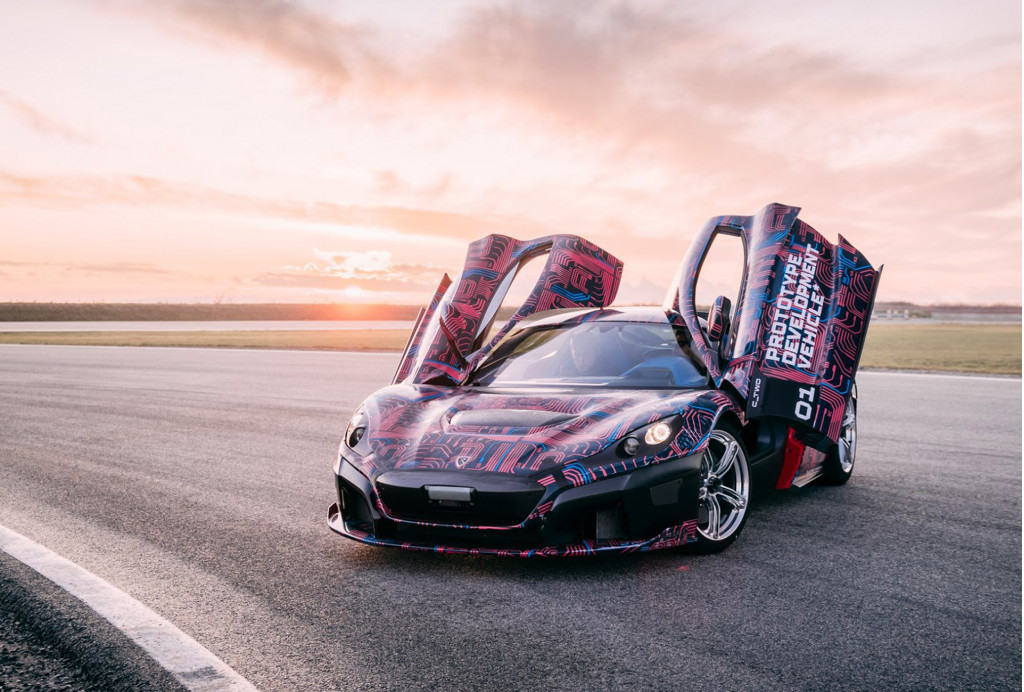The Rimac C_Two battery-electric hypercar will use autonomous-driving tech to coach drivers on track days. While Rimac previously mentioned the tech, this video provides more detail on just how it works.
Dubbed Rimac Driver Coach, the feature will help drivers who have the money to buy a supercar but lack the skills to get the most out of it on a track. The system acts as a “guardian angel,” allowing drivers to push the limits while still maintaining a safety net, CEO Mate Rimac said.
The company developed most of the hardware and software for the system in-house, but did use an Nvidia Pegasus computer similar to what other companies use in their prototype self-driving cars. For development work, the company equipped Kia Stingers (Rimac and Hyundai Kia have a tie-up) with the same sensor suite it plans to use in the C_Two. That includes nine cameras, six radar units, one single solid-state liar unit, and 12 ultrasonic sensors.
Cars have driven themselves around racetracks before, but while most relied solely on GPS maps for orientation, the C_Two will use its cameras to scan its surrounds in real time. That should allow a C_Two to drive autonomously with other vehicles on the track.

Rimac C_Two prototype
A driver-facing camera is used to monitor for distraction. It’s similar to what Cadillac uses for its Super Cruise system. As with Super Cruise, Rimac Driver Coach shifts some of the workload from human to machine, but still requires an attentive human behind the wheel.
Unveiled in concept form at the 2018 Geneva International Motor Show, the C_Two boasts 1,914 horsepower and 1,696 pound-feet of torque. Rimac previously said the supercar would do 0-62 mph in 1.9 seconds, with a top speed of 258 mph. In addition to Driver Coach, the C_Two sports torque-vectoring all-wheel drive and a drift mode.
Rimac has said the production C_Two will differ significantly from the concept version. The production model was scheduled to be unveiled at the 2020 Geneva show in March, but the show’s cancellation due to the coronavirus pandemic forced Rimac to push back the unveiling to later this year. The start of production has also been delayed to 2021.